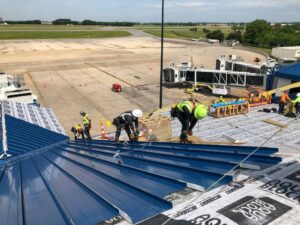Nashville, Tennessee – A Close Call on the Runway
In a dramatic turn of events at Nashville International Airport on Thursday morning, an Alaska Airlines flight had to swiftly abort its takeoff to avoid a potentially serious collision with a Southwest Airlines jet. Alaska Airlines flight 369, a Boeing 737 MAX 9 carrying 176 passengers and six crew members, was on the runway when the incident occurred.
The Start of a Routine Flight
The day started just like any other for the airline crew and passengers, who were eager to kick off their journey to Seattle. Everything seemed to be going as planned until around 8:15 a.m. CT. Despite receiving clearance from air traffic control, Alaska Airlines flight 369 was speeding down the runway—at around 120 mph—when the pilots noticed that a Southwest Airlines jet was approaching the runway, having been cleared to cross the same path.
A Swift and Expert Response
Realizing the critical situation unfolding, the trained pilots of the Alaska Airlines flight quickly applied the brakes. In a statement, Alaska Airlines emphasized that “our pilots train for these situations and they handled the situation expertly.” Thanks to their rapid response, the aircraft came to a halt, but not before the tires were affected by the intense heat from the sudden stop.
The National Transportation Safety Board (NTSB), led by Chair Jennifer Homendy, is investigating this troubling incident. Homendy expressed her concerns, highlighting that the board is currently investigating several similar occurrences that raise alarms about aviation safety.
The Aftermath
After bringing the aircraft to a safe stop, the crew taxied it off the runway and closely monitored the situation. In an effort to ensure passenger safety, they proceeded to deflate the tires, a design feature intended to mitigate risks following such rapid braking maneuvers. Passengers were safely led off the plane and made their way into the terminal without further incident.
Alternative Arrangements for Passengers
Recognizing the inconvenience that such a stressful event imposes, Alaska Airlines acted quickly. They arranged for another aircraft to fly to Nashville to transport the passengers to their original destination in Seattle, aiming for the group to arrive that very night. As a gesture of goodwill, Alaska also decided to refund the airfare and provide each passenger with $1,000 for any troubles caused by the event.
Investigation Details
The FAA is also conducting its own thorough investigation into this near-miss incident. Southwest Airlines, which had flight 2029 scheduled to depart for Jacksonville, Florida, is working closely with both the FAA and NTSB throughout this process. A spokesperson assured that “nothing is more important to Southwest than the safety of our customers and employees.”
Safety Measures and Technology in Airports
Interestingly, the FAA had previously announced plans to install new surface awareness technology at four major airports—including Nashville—by July of this year. However, it remains unclear whether this technology was fully operational during the incident. Homendy questioned, “Was it online on that runway? Did warnings go off?” The FAA has not commented on the operational status of the new technology, leaving questions lingering in the air.
Looking to the Future
This incident falls within a concerning trend, as last year’s data highlighted a series of near-misses and raised alarms regarding aviation safety in the U.S. However, there is some glimmer of hope as the number of serious runway incursion events reportedly dropped by over 50%. FAA Administrator Mike Whitaker commented on ongoing efforts to enhance aviation safety, stating that “we continue to work on the issue by creating more technology for controllers and improving arrival facilities.”
As the NTSB pushes for better training for air traffic controllers and calls for quicker implementation of safety technology at airports, the hope remains that incidents like this can be prevented in the future. As we reflect on Thursday’s events, it’s essential to recognize the professionalism and quick thinking of the airline crew, who ensured the safety of all those aboard.








